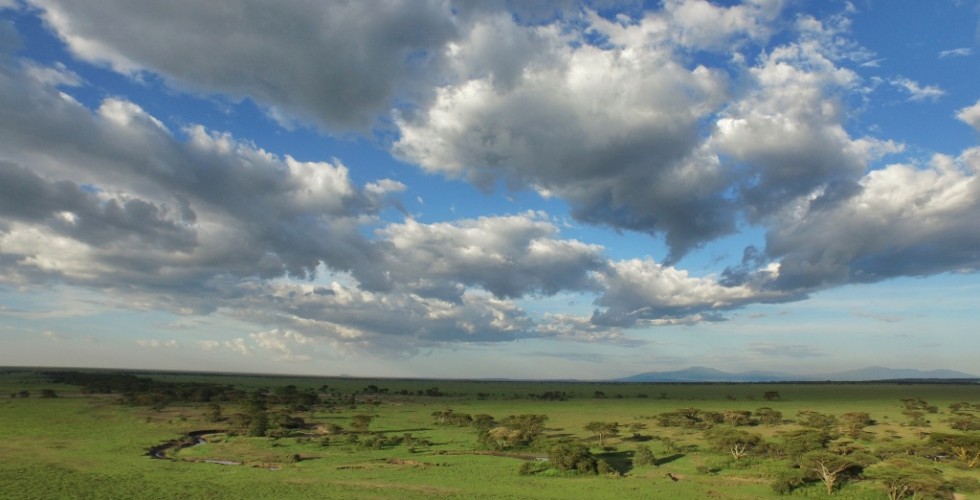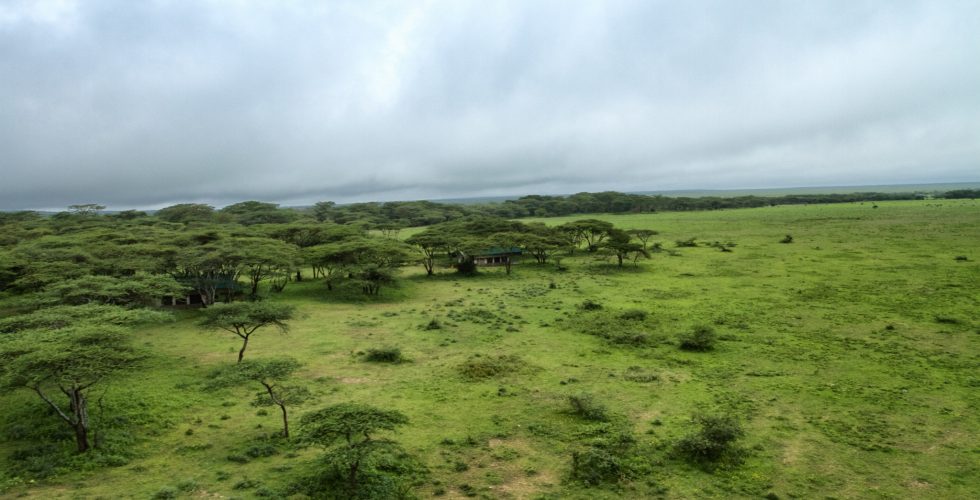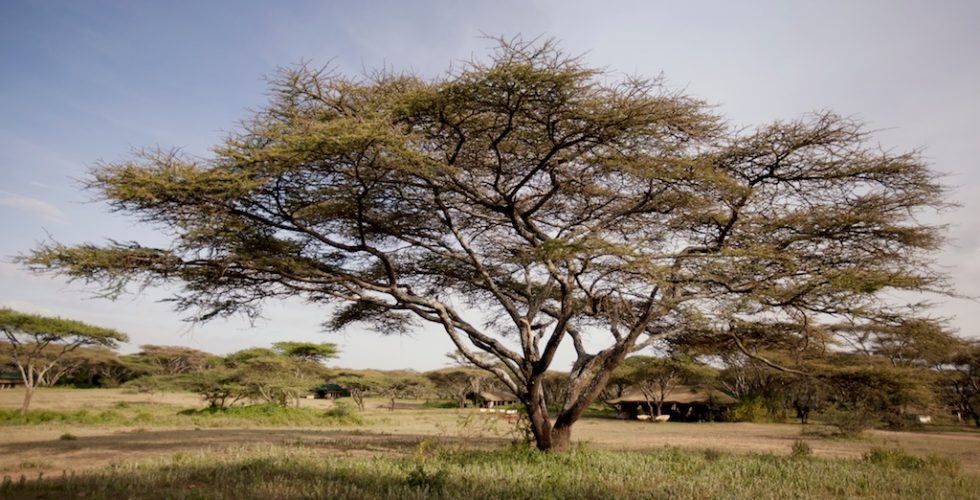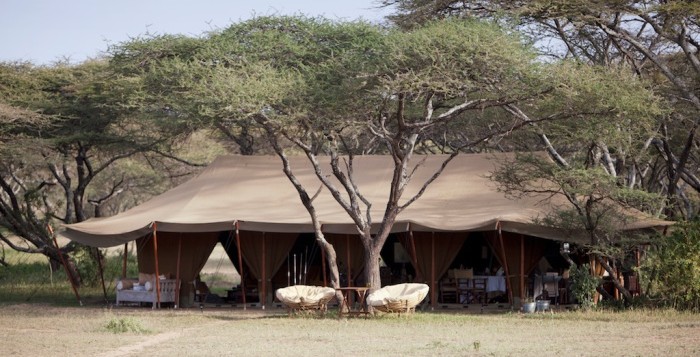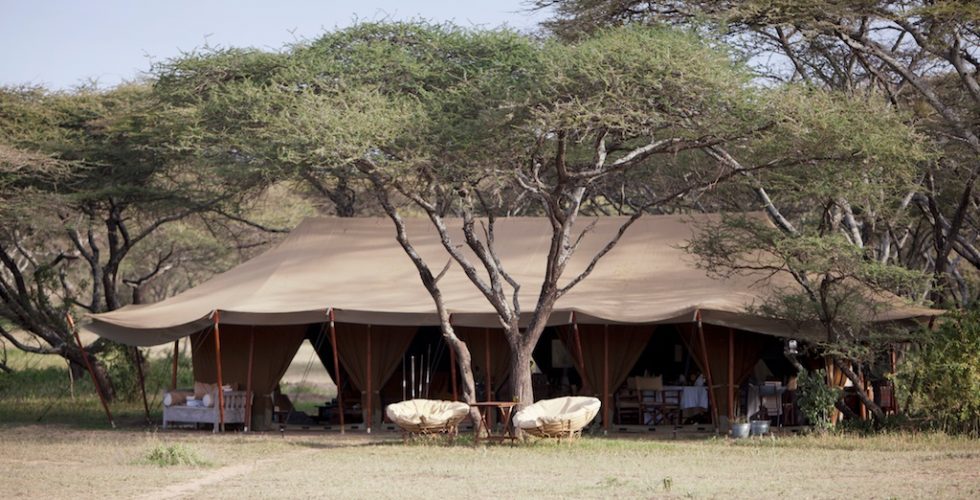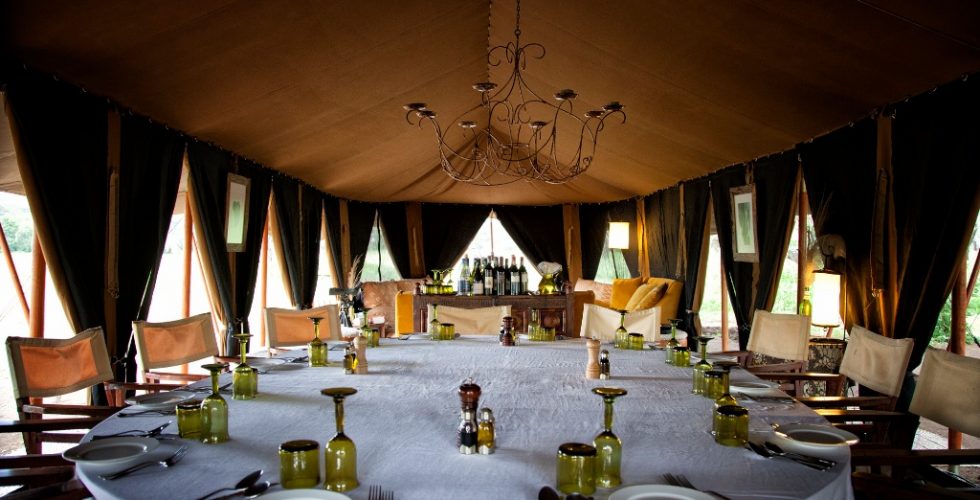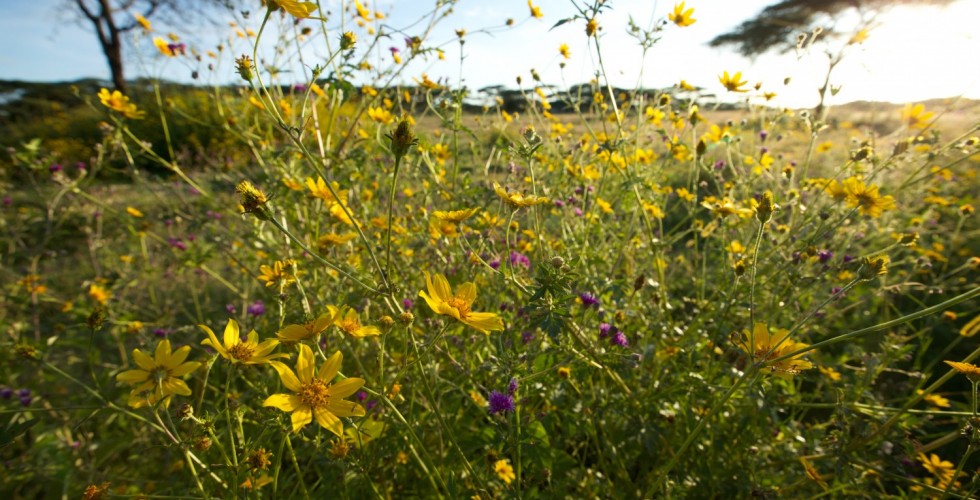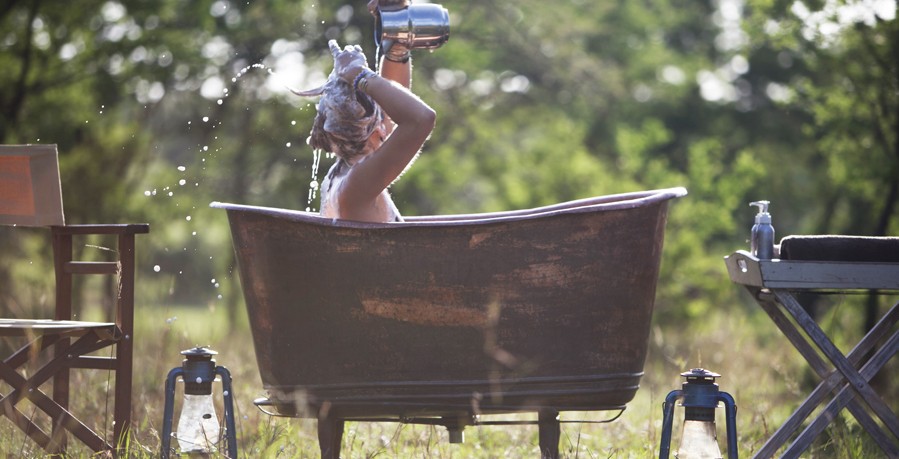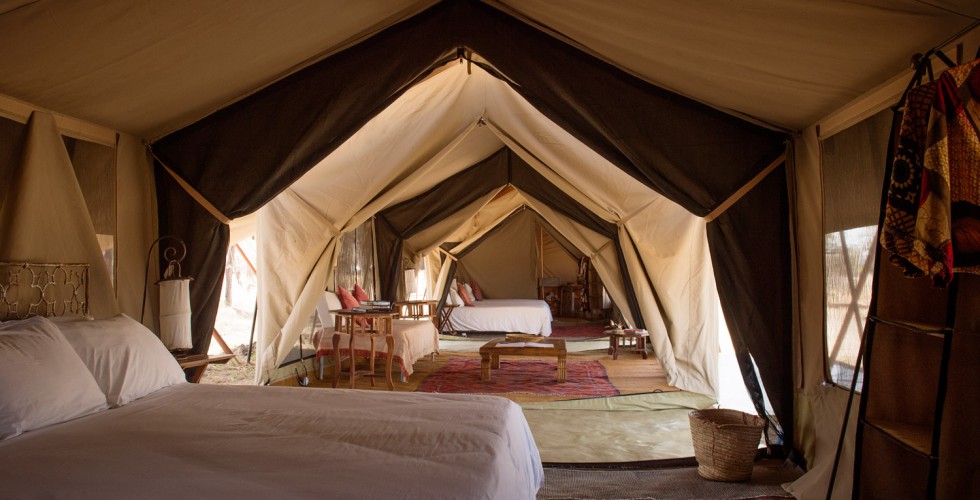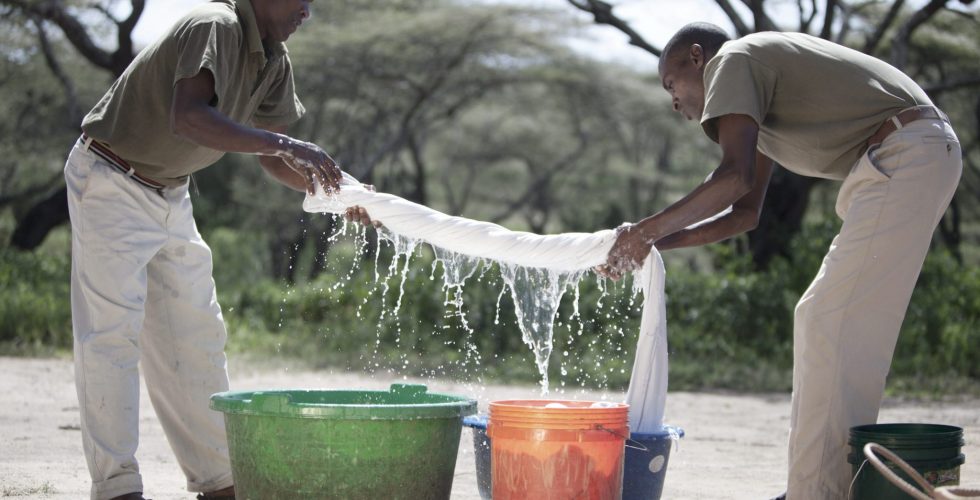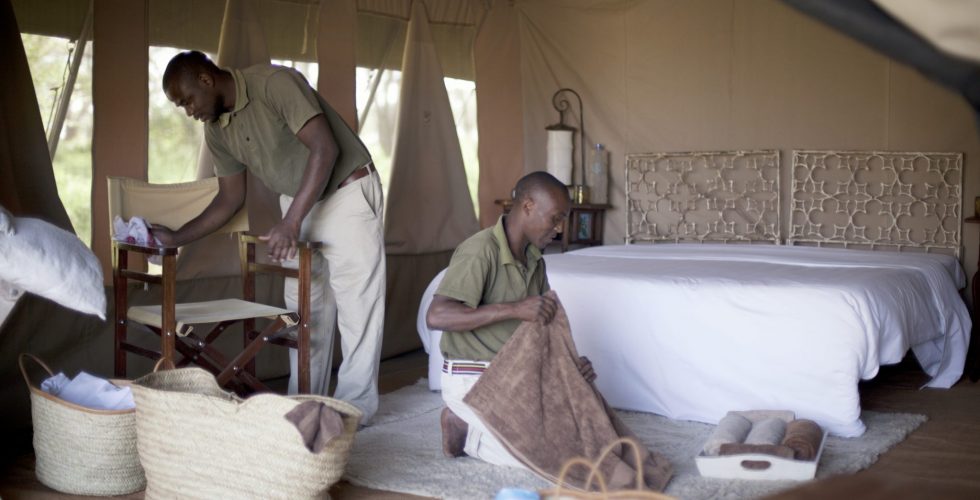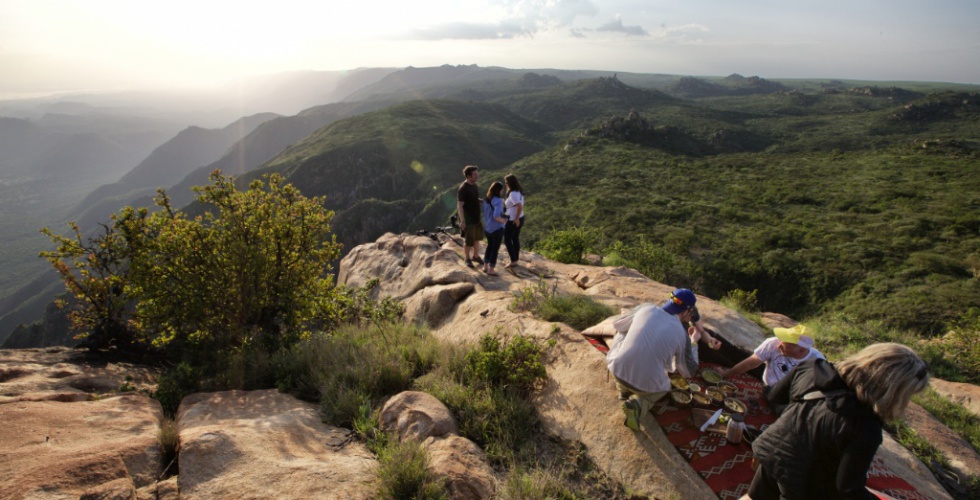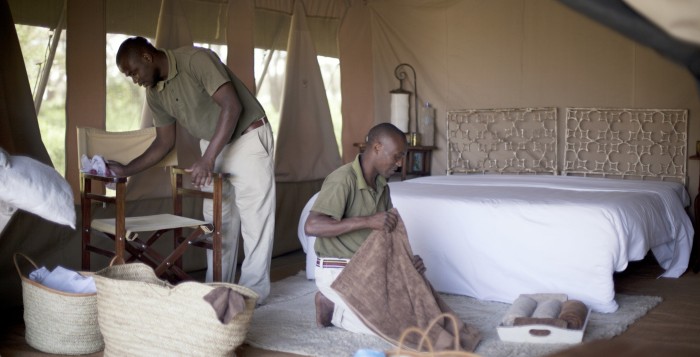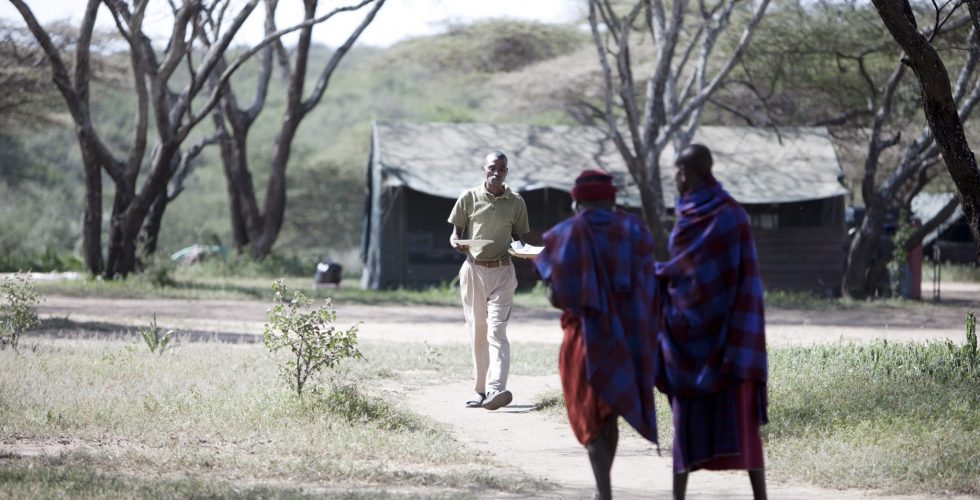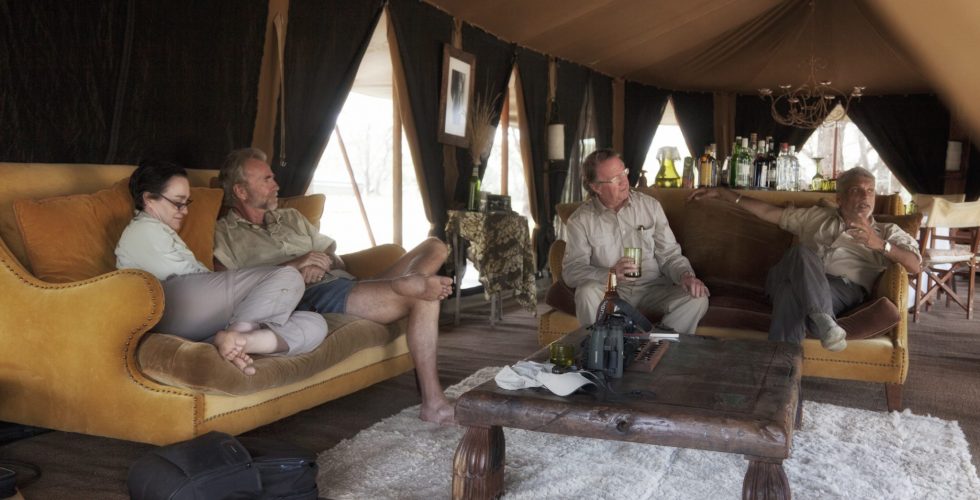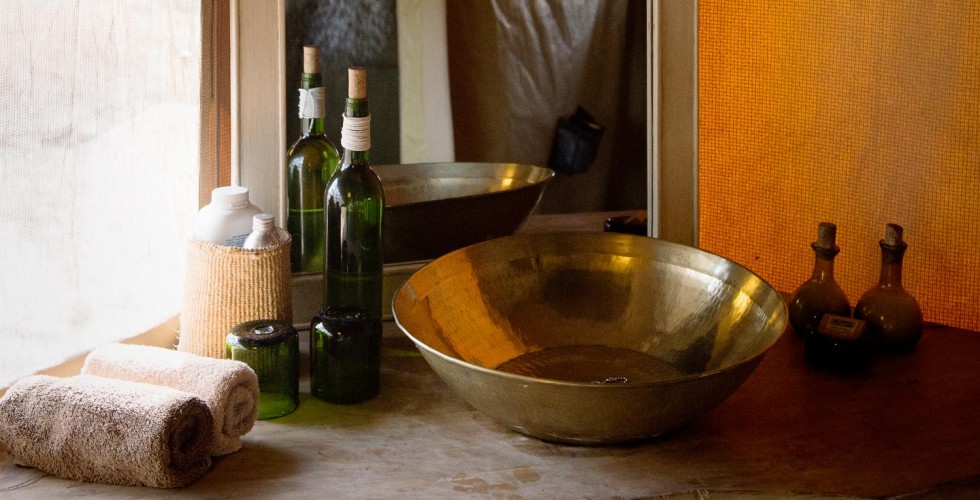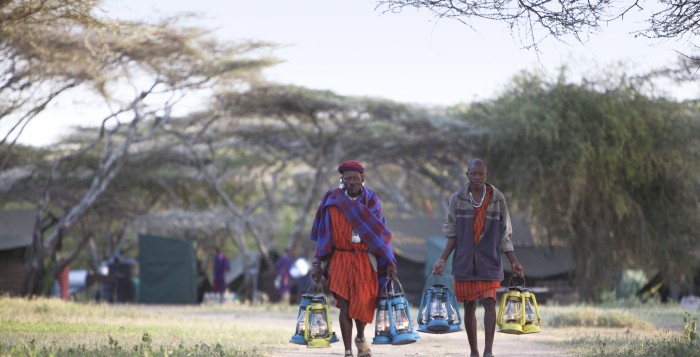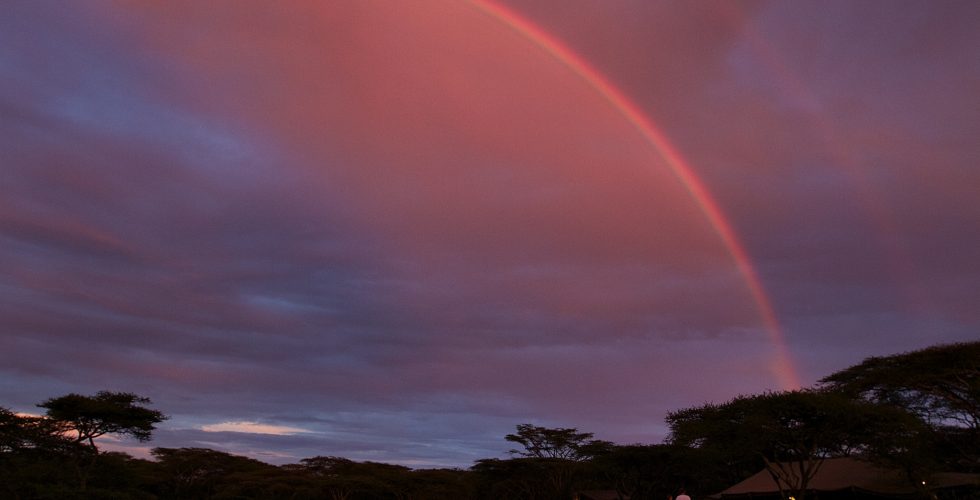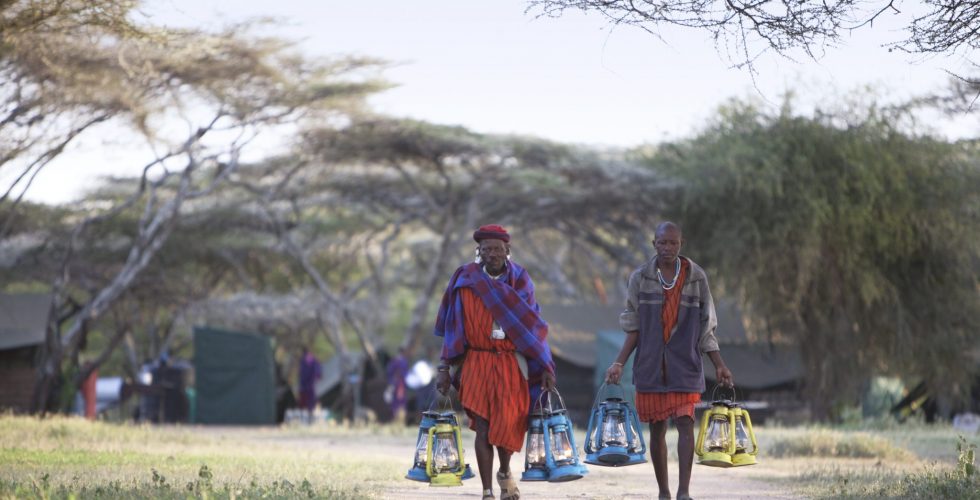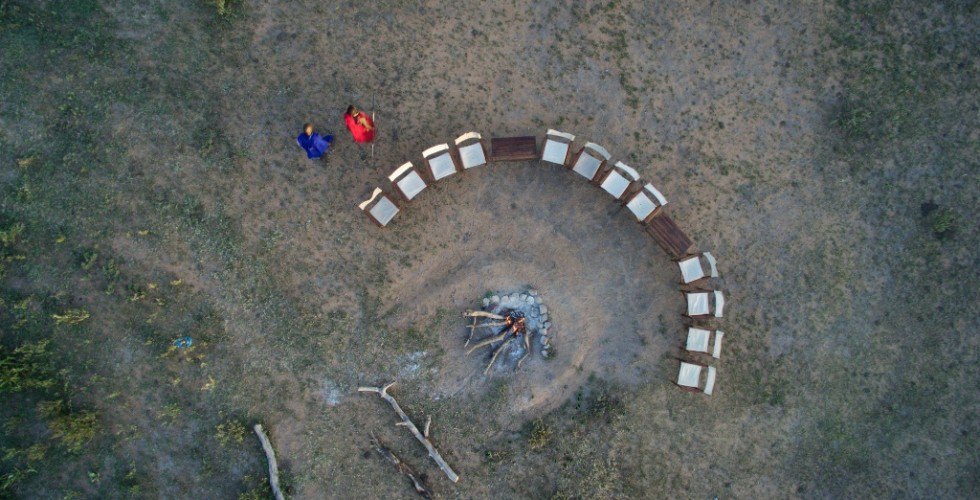Serian’s Serengeti is a mobile camp, and from mid-December to May, we set up on the southernmost extreme of the Serengeti’s short grass plains: prime position to spectate the wildebeest birthing season. Dramatic savannah storms sweep in nourishment and new life, and an innate primordial urge pulls the wildebeest to the site of their origins to reproduce. The plains literally come to life for the birthing season. Millions of gnus and zebra dominate the landscape, looking for the fresh green grass that follows the first rains – and to give birth to their young.
Serian’s Serengeti South strikes the perfect balance between colonial camping style, and elegant accents of comfort – home away from home, in the form of 6 spacious, lavish tents. Each is complemented by tasteful décor that lends a touch of sumptuousness to the interiors. The en suite bathrooms include a bucket shower and a flushing toilet – classic safari simplicity with a nod to life’s little comforts.



This part of the world is remarkable for its sheer mind-boggling immensity: think unending savannah, massive vaulted skies – and 2 million wildebeest giving birth to 400,000 calves within a period of 3 to 4 weeks. It’s vastness and numbers on a scale that stretches the boundaries of the imagination.
A few kilometres away, our mobile camp Kusini has an incredible vantage point of the vastness of the plains. Ancient trails weave the migration past and through the camp. Given the sheer multitude of plains game and their brand new babies, the big cats are never far behind for an easy meal: this is especially prime cheetah country, and there is ample opportunity to watch these impressive predators in action.
Birthing season aside, we have access to a million acres of a stunning acacia-dotted conservation area – an incredible environment for exploring. Just south of us is Lake Eyasi: home to our Hadzabe and Ndorobo guides, who have centuries of bush craft at their fingertips. Being among these people and their ways is one of the best things about this spot: they can open your eyes to the secrets of this beautiful space.
Flycamping. There’s no better way to get to grips with the true essence of safari than to get out there on foot, and camp like an explorer in days of yore.
Many photographers forget to take pictures of animals in their environment. They are too focused on frame-filling portraits that reveal every hair or feather
![]()
![]()
![]()
40000
IN THE WILD
![]()
![]()
![]()
300
KG OF FOOD AN ELEPHANT CONSUMES A DAY
![]()
![]()
![]()
1
DEDICATED 4WD PER GROUP
![]()
![]()
![]()
18
KG AVG WEIGHT OF A KORI BUSTARD
![]()
![]()
![]()
5
MINS IT TAKES FOR A BABY WILDEBEEST TO WALK

